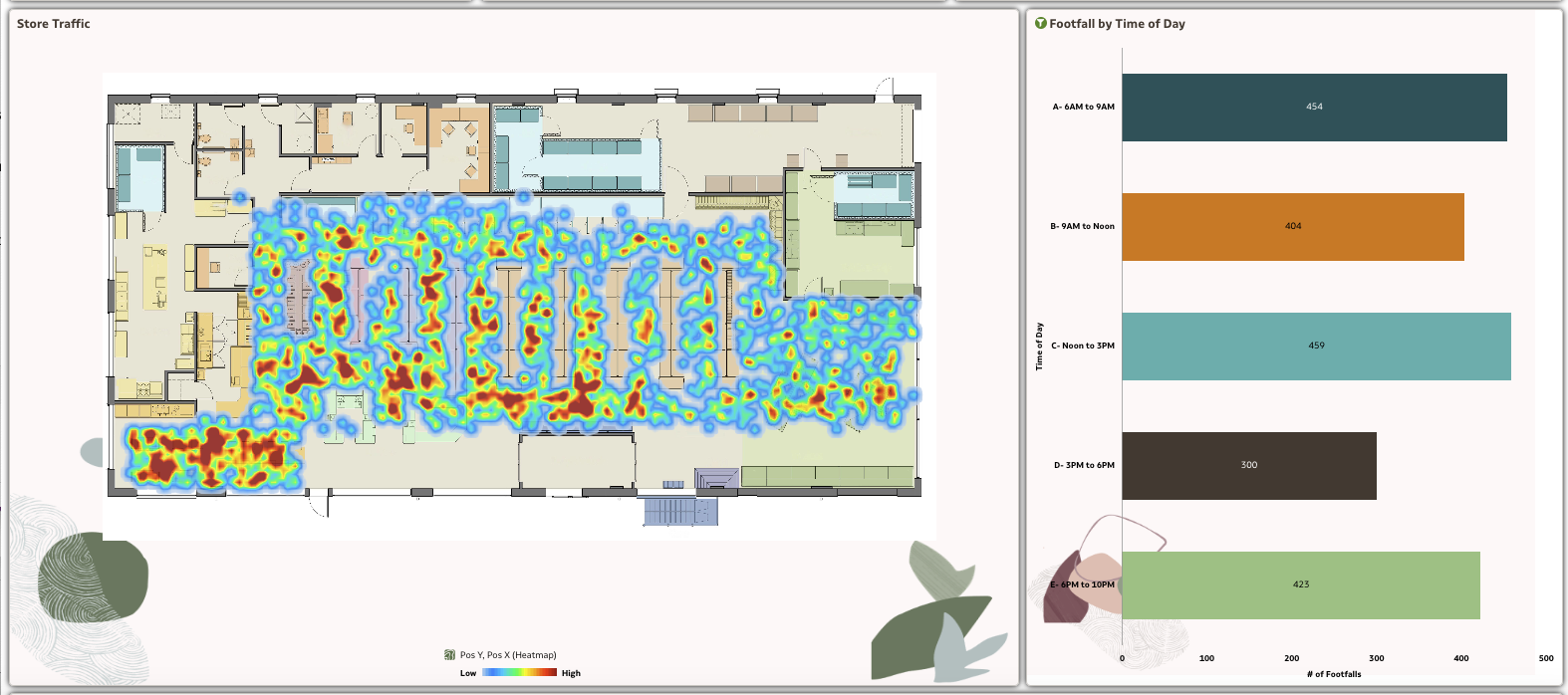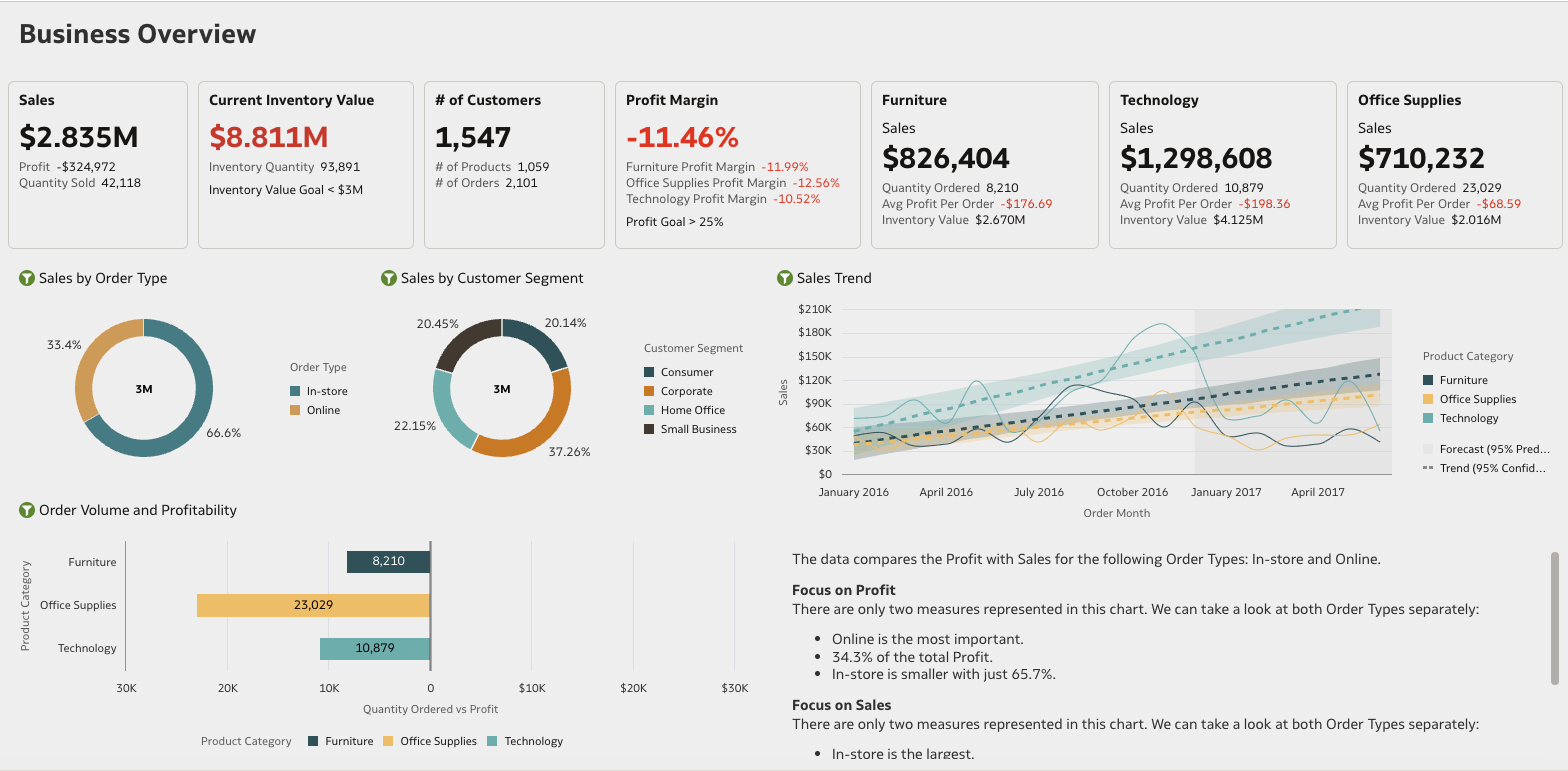The Oracle Analytics team has published a set of demo videos that show top retail scenarios to illustrate how using analytics can help address key challenges – you can watch them via this YouTube playlist. Across Inventory Management, Sales and Profit, and Lead to Revenue use cases, these demo videos showcase the application of Oracle Analytics techniques and features to streamline and enhance retail operations.
This blog explores the tools Oracle Analytics provides for retailers to manage their inventory, improve labor costs, provide an enriched customer experience, and use forecasting to predict future outcomes.
Sales and Profit
To succeed, retailers must constantly evaluate trends, seasonality patterns, preferences, and buying cycles for clues to consumer behavior so they can track the potential impact on demand. External conditions can also contribute to increased consumer activity. In the competitive retail landscape, retailers with advanced analytics can more easily optimize pricing, promotions, incentives, staffing, and purchasing to outpace competition and maximize profits.

One example of getting ahead with analytics is using Oracle Analytics to map customer footfall. This allows retailers to immediately highlight peak shopping hours and visualize the most popular areas in their stores, which in turn enables them to change product placement to drive sales. For example, putting discounted items with excess inventory in areas of high traffic can encourage consumers to purchase. Identifying these factors streamlines how retailers learn from consumers and helps advance planning and decision-making. Oracle Analytics can also facilitate pricing optimization. By leveraging built-in machine learning, retailers can use data to reduce costs and improve pricing with supplier agreements.
Inventory Management

Inventory management is an art – and one of the best examples of the benefits of data-driven decision-making. By helping ensure there is no over-purchasing of inventory, and also that any excess inventory is promoted, retailers can be confident they are only purchasing what their demand requires, freeing up working capital and saving significant costs associated with shipping, storing, moving, and retiring inventory. Using analytics to evaluate purchasing trends and generate forecasts for demand planning helps retailers optimize profit margins, enabling them to substitute suggested suitable in-stock items for out-of-stock inventory, driving customer conversion and increasing sales. The Oracle Analytics explain feature helps by automatically highlighting anomalies in inventory data, and advanced visualizations like box plots make it easy to display and understand product profitability variations.
Lead to Revenue
Lead to revenue reporting requires retailers to understand numerous interrelated factors across sales and marketing life cycles; determine the value of marketing touchpoints based on their impact on conversions, pipeline, and revenue; and assess their ongoing impact. It’s complex analysis that’s traditionally been cumbersome due to the volume of data, the speed of change, and presentation methods requiring lots of copying and pasting. Oracle Analytics helps simplify this entire experience, enabling data from different domains to be easily combined, centrally managed, and presented in dashboards that are both appealing and interactive, substantially reducing repeat manual editing. Because the platform is built to handle enterprise-class reporting requirements, it’s also easy to add data on the fly to enhance the analysis and answer questions in the moment. Oracle Analytics also offers a built-in machine learning-powered language model which automatically creates a natural language narrative for selected visualizations. This improves accessibility to data and also furthers the audience’s understanding of the underlying information. Retailers can use these narratives to accelerate and improve their decision-making process.
Conclusion
By utilizing Oracle Analytics, retailers can enhance their understanding of their business, driving deeper insights and helping to improve decision-making. From more easily optimizing inventory management and predicting staffing needs to more quickly understanding consumer behavior, forecasting demand, and protecting consumers, there are benefits for every retail business. Oracle Analytics equips retailers with the tools to make sense of a broader range of data and use it to make informed decisions with confidence, giving them greater control over their success.
As you consider how Oracle Analytics can enhance your retail operations, join the Oracle Analytics Community to ask questions, view highlighted features, and share tips and tricks with other users.
For more information, follow these links to helpful resources:
- Analyze Data with Explain in Oracle Analytics
- YouTube Industry Demo Playlist
- Supported Data Sources
- Custom Map Layers
- Anomaly Detection
- Analytics Live Demos
